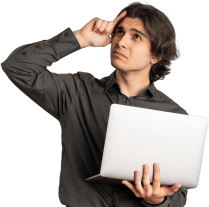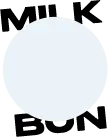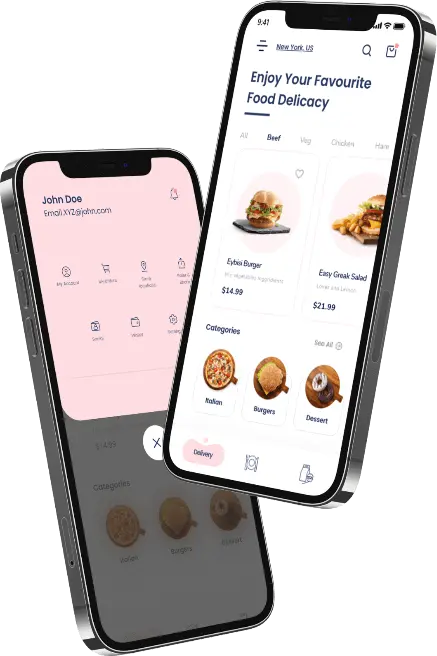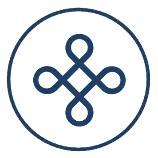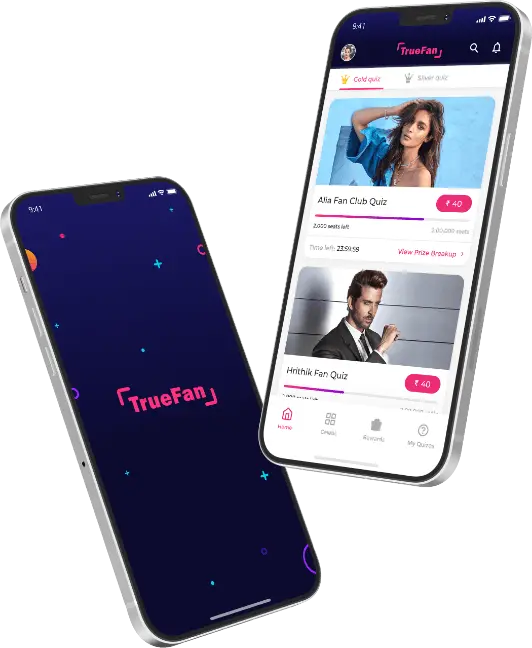A few years back, managing databases was an issue. Maintaining these databases required huge storage areas stuffed with data that could take time to find, and the files needed to be properly filed. For healthcare services, the absence of effectiveness can negatively impact results. This is where a health data warehouse comes in.
The healthcare data warehouse, also known as HDW, is an essential system for the health sector, particularly in drug discovery, cancer treatment, and disease prediction. This excellent turning point could aid in catching diseases earlier, identifying those at risk of developing certain illnesses, and accelerating medical and administrative procedures. Today, about 30% of world data comes from healthcare professionals, and this is predicted to increase to 35% in 2025.
For the most part, data warehousing in healthcare functions as a central repository that allows organizations to organize and study huge amounts of data collected from various sources. Because it can store historical data in an organized format, it’s designed to be optimized for analysis and query. This allows for easy and quick access to data and reporting.
Also Read – Warehouse Management System in Food Industry: Everything You Need to Know!
This blog post will discuss the significant advantages of data warehouses in health care.
So, let’s get started.
What Is Data Warehousing In Healthcare?

The healthcare data warehouse (HDW) is a centralized database for electronic health records and clinical information retrieved from diverse sources within the healthcare industry. These could include various sources, including EHRs, EMRs, ERP, and medical databases for radiology, devices, and many more. If implemented correctly, this can reduce medical errors, improve patient safety, and aid in creating an overall EHR. Health data warehouses also allow organizations to keep patients’ historical health records for research and analysis.
A data warehouse within healthcare sorts through this mess of information, finding patterns, trends/tools, and other warnings that would otherwise go unnoticed. If data, for example, indicates that patients suffering from particular conditions are more likely to suffer complications after specific treatments, healthcare professionals can adjust their approach to ensure better results.
In essence, HDWs aren’t only concerned with storing data; they’re also about using the data to change the way healthcare is delivered. They convert information into knowledge, then action, and action into better patient results. The expected increase in the demand for data warehouses in the healthcare field, predicted to reach an astonishing $12.49 billion by 2030, demonstrates a crucial role for adequate health data management.
Also Read – Exploration Benefits and Use Cases of HL7 EMR Integration for Healthcare Software
Benefits Of Data Warehousing In Healthcare

Healthcare data warehouses offer numerous benefits, including simplifying operations, improving patient care quality, and improving financial reporting efficiency. The data warehouse centralizes healthcare-related information and is a powerful instrument for decision-making, analysis, and strategy development. We will look at the primary benefits to the health sector.
1. Out-Of-The-Box Reporting
Making reports could take anything from a few minutes to several hours. Data warehouses significantly improve organizational efficiency and reduce the time needed to create reports, providing quick and comprehensive reports straight out of the box. For example, a hospital may use this function to measure the results of different surgeries for various demographic groups. It allows quick adjustments to enhance the quality of care.
One of the major issues dealt with by data warehouses is removing data silos. This is a frequent problem where disconnected data systems can lead to inconsistencies and inaccessible data for departments. Data warehouse solutions integrate data into one unified system. They create a seamless data model that enables informed decisions and analyses based on the complete data set.
2. Enhanced Data Analytics
Healthcare data warehouses function as an example of a puzzle that aids in uncovering the cause of a patient’s condition. The data warehouse contains information on the person’s life, background, family history, routines and weaknesses, diet and exercise data, allergens, and more.
The best part is that it’s complete, integrated, and ready for use. Data challenges and analytics allow you to look for clues and recognize patterns that lead to the correct conclusions regarding patients’ conditions.
3. Reduce Redundant Tests Or Procedures
Data warehouse solutions can significantly contribute to healthcare efficiency by identifying patterns in repeated tests or practices that may need to be noticed. The result is substantial cost savings. A thorough analysis of the latest technology can determine whether specific routine tests are performed in a way that is not required.
This is particularly important since around 30% of laboratory tests are unnecessary. The data repository allows an honest review of existing guidelines and can adjust existing recommendations. This, in turn, can reduce unnecessary tests that patients need to undergo and provide for more specific and patient-centric healthcare.
4. Streamlined Operations
The more extensive the hospital gets and the greater variety of options it offers, the demand for effective information administration increases dramatically. The database warehouse for healthcare can help you improve appointments, decrease waiting times, and improve your patients’ experiences.
Furthermore, it can take over the headache of managing inventory. Tracking usage allows it to notify staff members before the supply is exhausted and prevent shortages. Regarding budgeting, the software will analyze processes and patterns to determine the areas for improvement. Because of its analytical solution-focused capabilities, data warehousing identifies and improves all aspects of business in medicine.
5. Integrated Data Repository
The concept of integrated data repositories has emerged as an essential solution to the vast issue of fragmentation of information for patients in the healthcare field. This challenge makes accurate and effective treatment for patients much more difficult.
Also Read – Mobile Apps Enhancing Healthcare Services in the UK
By centralizing detailed patient histories, test results, and other crucial information into healthcare databases, these repositories ensure that every important information is kept in one easily accessible area. Healthcare professionals can easily access vital data, resulting in faster and more precise diagnoses and treatment programs.
6. Informed Treatment Decisions
Data warehouses for healthcare collect vast quantities of data from patients, allowing doctors to make better-informed decisions regarding treatment. The process could be as simple as using previous data to anticipate the individual response of patients to specific treatment options. Therefore, developing custom strategies to increase efficiency while mitigating possible negative side effects is vital for long-term success. This is particularly important because reducing adverse side effects increases patient treatment safety.
Also Read – mhealth App Development: The Power of Healthcare and Wellness On the Go!
It also ensures that the treatment is efficient and acceptable, resulting in greater compliance with treatment programs. An analysis conducted across the globe suggests that non-adherence to prescription regimens may result in an annual health cost of more than $52,000 for each person. One of the main reasons behind medication non-compliance is the fear of suffering undesirable side consequences. These side effects are an apprehension problem and a frequent reason for hospitalizations.
7. Faster Data Retrieval
Data warehouses are created to hold large quantities of information from various sources in a single place, making it simple for health organizations to retrieve and access their data swiftly. Furthermore, they utilize online analytical processing (OLAP) to manage information and allow quicker and more efficient data retrieval.
Data warehousing can also benefit from sophisticated indexing and search features that enable rapid retrieval of data items or collections. Furthermore, utilizing warehouses for healthcare data management can help reduce the need for repeated data entry or manual data aggregation. This can cut down time and decrease the chance of making mistakes.
Furthermore, the speed of data retrieval has numerous advantages for healthcare institutions involved in analytics. By accessing pertinent data appropriately, healthcare professionals can improve patient care by providing timely care and reducing operating costs. It allows them to focus more on making decisions and improving customer satisfaction.
8. Scalability And Flexibility
A lot of clinics and businesses begin small but expand quickly. Once patients are regular clients and their records increase with each visit, the same goes for the clinic’s management. The healthcare data warehouses may expand or shrink (if needed) in line with the changes.
Numerous tools are available to be included or eliminated based on current needs. Increasing the size of your digital database allows you to ensure that the application is continually optimized for maximum ease of use.
9. Predictive Analytics And Machine Learning
An enormous, systematized database helps doctors track the root of any threat to patients’ health. It can identify potentially harmful routines, patterns, or genetic factors that could lead to a condition later. Awareness of the risk helps make informed decisions and stop it from occurring.
In a more significant sense, it is possible to detect massively infectious outbreaks, like the seasonal flu, and be prepared for the possibility of it ahead of time. Through the collection, organization, and analysis of a large amount of data, the warehouse database can help prepare for and respond to the event before the event happens.
Key Features Of Healthcare Data Warehouse

Creating a successful and effective healthcare data warehouse with the help of a healthcare app development company requires more than simply analyzing massive quantities of data. It requires a systematic design and function strategy focused on the specific requirements for optimizing patient care health analytics and operational efficiency.
1. Single Sign-On (SSO)
SSO allows users to access many applications using the same password, simplifying logging in and improving users’ experience. In healthcare settings, doctors can quickly access patient records, lab results, and other apps without having to log into their accounts, saving time and decreasing anxiety.
2. Integration Of Data
Health data warehouse field data can be taken from EHRs, ERP software, HR management systems, systems for managing claims, and large health databases. Data integration can include large stream data and sophisticated medical data loading and analyzing. Ensure your HDW can handle standardization of information from internal and external sources.
3. Data Cleansing And Transformation
Like any other large and ongoing databases, the healthcare database also requires regular clearing and tidying to stay current. This is important for a variety of reasons. It removes errors, duplicates, and inconsistencies among the information that might affect forecasts or test results.
Additionally, it identifies the information gaps and then marks those for filling. After the cleaning process, data could be further augmented, changed more efficiently, sorted, indexed, or indexed.
4. Data Integrity
Data integrity is the notion that a medical data warehouse is correct, reliable, and constant. HDWs comprise semi-structured, structured, and unstructured data derived from EHRs, ERP software, HR management systems, claim management systems, and a large public health database.
So, data integrity or quality is essential when it comes to a health data warehouse for maintaining accuracy, reliability, and consistency. So, organizations in the healthcare industry should have ETL and ELT quality checks for data validation and cleaning for data accuracy, completeness, and reliability.
5. Data Storage Scalability
Healthcare organizations are seeing an increase in information volume because of the digitalization of health records, diagnostic imaging, and the development of wearable app development technologies. It is a challenge to ensure that the storage of data solutions will expand to accommodate these demands without jeopardizing quality or reliability. In the case of hospitals, they have to expand their capacity for storage of data as fast and efficiently as growing data.
6. Data Governance And Compliance
Data governance refers to the supervising aspect of a data warehouse in healthcare. An established set of guidelines decides what to do with the data. It encompasses the entire information process from its creation to the time it’s either deleted or archived. Additionally, because healthcare relies on accuracy and reliable information, the government of data employs procedures to maintain the relevance of information and ensure by regulating access.
Understanding Healthcare Data Warehouse Architecture

When developing the data warehouse you will use for healthcare, it’s important to comprehend the layers of a data warehouse. Healthcare data warehouse design is composed of these layers:
1. Data Source Layer
It comprises both internal and external sources for data that collect pertinent medical information. Many kinds of medical data are gathered from ERP (enterprise resource planning) systems, radiology reports and EHR (electronic health record) prescriptions, reports CRM (customer relationship management) systems, and so on.
2. Staging Layer
The temporary intermediate layer of storage handles data coming in from various sources. The data is processed through the ELT (extract load transform) process, where it’s cleaned and converted from its original format into a consistent data set.
3. Data Storage Layer
The centralized storage layer can be utilized for data structure reporting and analysis. This unified repository is accessed through an ELT process. It also has data marts, subsets of data warehouses designed for certain business sectors, including finance, human resources (HR), and modern technology.
4. Layer Of Analytics And Reporting
The last layer of the structure comprises Business Intelligence (BI) and data analytics tools. These can be used to extract useful insights from the datasets. Tools for BI are used to analyze healthcare data. The results are communicated with the help of visuals, reports, graphs, summaries, charts, and graphs.
Various commonly used health data warehouse management system, each with distinct strengths and constraints, are also available. Selecting the model according to your needs best suits creating a reliable help for creating and analyzing data.
Healthcare Data Warehouse Models

Every provider uses several commonly used HDW models. Each has unique strengths and disadvantages based on different methods. Selecting the best one with the help of your mobile app development company in USA can aid you in binding data or preparing it for analysis when it best suits your organization.
These are the most popular types:
1. Enterprise Data Model
The model is an approach from top to bottom that most analytics companies promote, as it’s most often used by organizations requiring more analytical capacity. This model aims to design the best database at the very beginning. This can be accomplished by identifying what your company wants to study to improve specific results beforehand. In this case, for instance, you could prefer safety to cost-effectiveness, and then design your HDW to keep that purpose in the back of your head.
Though a popular model, the enterprise data model encourages an early-binding strategy that may slow time-to-value. Adjustments are time-consuming and difficult after the data has been tied. So, in the dynamic healthcare environment, business models could pose significant problems if new analysis is required.
2. Independent Data Mart Model
The model suggests the bottom-up method and is typically used for an ad hoc analysis because it allows for creating specific data marts for specific departments. For example, if a document on patient safety or the cost of medical care is needed, the department could create the report quickly.
Models for independent data marts tend to be smaller and less specific than data models for enterprises. They can help you establish and track important metrics more efficiently than enterprise data models. However, independent data marts may also take over systems often and cause redundant issues later.
Stages Of Data Warehouse Deployment In Your Healthcare Organization
The formal process for setting up the health data warehouse can be divided into four phases. Let’s have a look at them:
1. Planning
As you move forward, it is your responsibility to determine which processes in your business you’d like to enhance through data warehouse healthcare and select the best method for its implementation, considering the benefits and drawbacks we discussed in the prior paragraph. Particularly, you’ll have to know what issues your employees face and how DWH implementation can improve them.
Following that, you’ll have to assess your strengths and weaknesses within your current IT infrastructure and then create a description of a more efficient and better data warehouse. In the end, it is important to clarify the security guidelines and standards that you must follow when moving to a different data repository.
2. Design
As you move forward it’s time to engage experts who have expertise in the design and deployment of DWHs. They can help you design the structure of your future data warehouse and design the procedures for creating, transforming, and loading the data.
3. Development And Deployment
In this phase, experts utilize the appropriate technology and tools to create the necessary parts of an up-to-date digital infrastructure. They will then implement them, considering digital transformation and integrations with other services.
4. Testing
Following the initial implementation and deployment, the new data warehouse and the various services that work with it are fully tested. This means that experts can eliminate any possibility of a malfunction of the company’s business processes.
Data Warehousing Use Cases In The Healthcare Industry

The rise of data warehouses has made them important tools for driving innovation and improving the quality of patient care in different areas. By centralizing and harmonizing vast information, HDWs give you unprecedented possibilities for insight, analysis, and action. Let’s explore how HDWs can be used in different healthcare sectors.
1. Patient Care Improvement And Personalization
Healthcare facilities struggle with inconsistent patient data spread across several systems, for instance, EHRs, laboratory tests, and imaging equipment. If these situations are prevalent, hospitals have a difficult time giving individualized care to patients. This can result in poor health outcomes and treatment plans.
Implementing a cloud-based data warehouse that integrates patient data across multiple sources will be crucial to delivering personalized healthcare. The central data warehouse offers health professionals a complete understanding of the patient’s medical history and pertinent details. By consolidating all the information into one location, hospitals can make better-informed choices and develop individualized treatment plans that meet the patient’s requirements.
2. Operational Efficiency And Cost Management
Healthcare facilities often have issues that result in rising operating costs because of disjointed data across areas like scheduling and supply chain systems and resource management. Disjointed data makes it difficult to obtain a complete view of the operational processes, which results in increased operating costs.
A cloud or on-premise data warehouse combines operational data across all sources to provide an extensive process analysis of resource utilization processes, workflows, as well as control of the supply chain. Healthcare companies can improve procedures, find inefficiencies, and lower costs by studying the information. Data analysis, for instance, could reveal patterns in patient intake, leading to better staffing and scheduling decisions.
3. Clinical Research And Outcomes Analysis
Analyzing treatment outcomes and conducting clinical research can be difficult in the healthcare industry because of the inconsistent format of data and a variety of data sources. Researchers today spend a huge amount of their time creating data, which leaves less time for analysis and interpretation.
Data warehouses combine the clinical information from multiple studies, research, and patients’ records. It standardizes it to be easy to access and analyze with an organized format. Researchers can access a common database to discover developments, determine the efficacy of treatments, and generate fresh research findings in medicine. The streamlined procedure speeds up medical research, and increases the capacity to put research findings to practice quickly.
4. Predictive Analytics For Disease Prevention
Predicting illness outbreaks and preventing chronic illnesses is a challenge for health R&D with no comprehensive analysis of data capabilities. Conventional preventive and disease surveillance methods tend to be reactive instead of proactive. Cloud-based data warehouses provide sophisticated integration capabilities for various information sources, like medical records of patients and wearable devices’ information.
Data scientists can perform predictive analytics using information gathered by data warehouses to determine at-risk populations, forecast disease trends, and then implement preventive measures. In particular, predictive models can monitor patients suffering from chronic illnesses and take action before problems arise.
5. Enhanced Patient Engagement And Satisfaction
Reputation is improved by patient satisfaction within any industry of healthcare; however, it’s difficult without a complete 360-degree picture of interactions between patients across various points of contact. Incompatible systems do not allow health organizations to understand patients’ needs and preferences. The creation of a cloud-based database that combines patient interactions details, like appointment records, treatment records, communication channels, and feedback forms. It offers a single view.
The provision assists healthcare providers in developing targeted engagement strategies and customized communications strategies. For example, examining patterns of interaction and patient feedback will help design more efficient patient assistance solutions.
6. Regulatory Compliance And Reporting
Reporting compliance manually for healthcare institutions is susceptible to errors and may be a source of penalties if completed properly. Data warehouses are solid protection for reporting and compliance to ensure accuracy and reliability. Automated report creation tools can extract the needed data and format it according to legal requirements. This helps streamline the reporting process, decreases the chance of making mistakes, and ensures that reports are filed in time.
7. Patient Records Management
Health data warehouses simplify patient records management by offering extensive, unifying information about patient records. Some software widely utilized in hospitals acts as an HDW to consolidate patient data across various departments. It ensures medical professionals have instant access to all of a patient’s medical history, including lab results, imaging scans, and even prior treatments as well as ongoing treatment strategies.
Healthcare Data Warehouse Implementation Costs

Investing in a healthcare data warehouse (HDW) is an essential choice for health organizations as it will yield significant benefits regarding better patient healthcare, improved operational efficiency, and strategic analysis. HDW installation costs vary significantly, typically from $70,000 to $1,000,000.
The cost of HDW implementation is largely based on the scale of the task, including elements like the number of data sources that need to be merged with, the amount and complexity of the data, and particular security needs. In particular, the integration of data from various systems like ERP, EHR/EMR, CRM, as well as pharmacy management software, each having its specific structure and data format, is likely to have an enormous influence on the project’s cost.
Furthermore, the size of the healthcare company is an important factor to consider when determining the amount to be invested. Smaller businesses with between 200 and 500 employees could face expenses between $70,000 and $200,000, and larger companies could need to invest up to $1,000,000 in the USA. This is a stark reminder of the necessity of taking care in planning and considering important cost elements like data consistency, the quantity of data to be processed, and the requirements for performance.
Conclusion

The rise of health information storage is an enormous step in data-driven healthcare decision-making. The trending technology allows healthcare professionals to make educated choices based on precise and integrated data from numerous sources. The advantages of setting up a healthcare data warehouse are extensive and diverse, including improving the quality of patient care by studying patterns of disease and treatment results to streamlining administrative processes through identifying inefficiencies and fraudulent practices. Furthermore, the longer-term savings in cost, the efficient multi-level operation, and the vast scope for advanced research makes the warehouses an indispensable asset for every healthcare institution.
Additionally, these systems open the way to groundbreaking studies and innovations, providing fresh insights into disease treatment and prevention. With the pace of change in healthcare it is imperative to have the right data analytics strategy that can’t be understated.
Get in touch with Techugo today to explore how our innovative data warehousing solutions can elevate your healthcare organization!
Post Views: 1,433




 SA
SA
 KW
KW
 IE
IE AU
AU UAE
UAE UK
UK USA
USA
 CA
CA DE
DE
 QA
QA ZA
ZA
 BH
BH NL
NL
 MU
MU FR
FR









